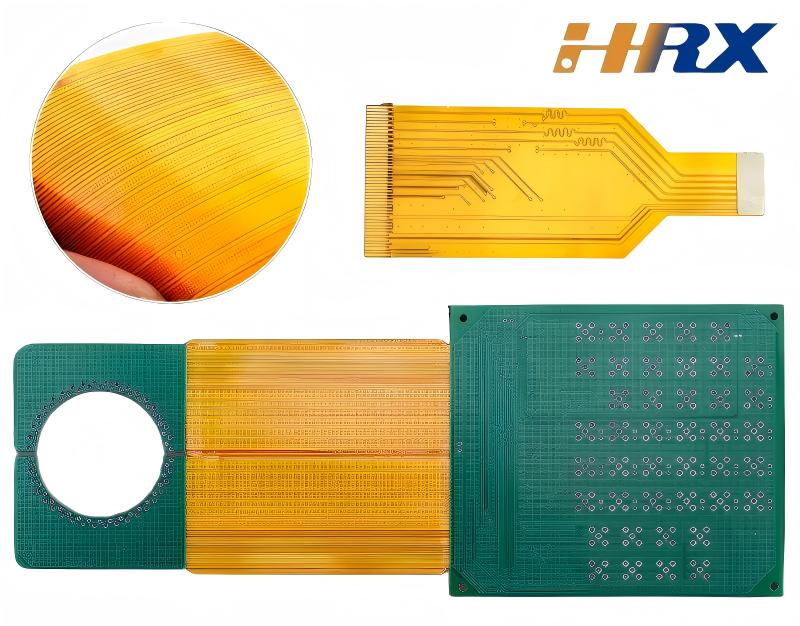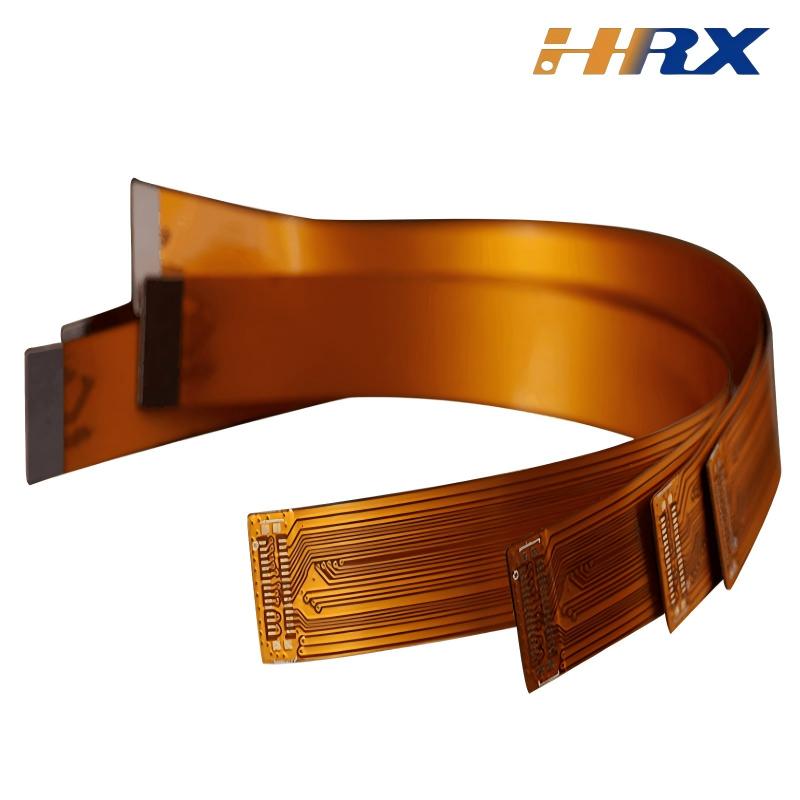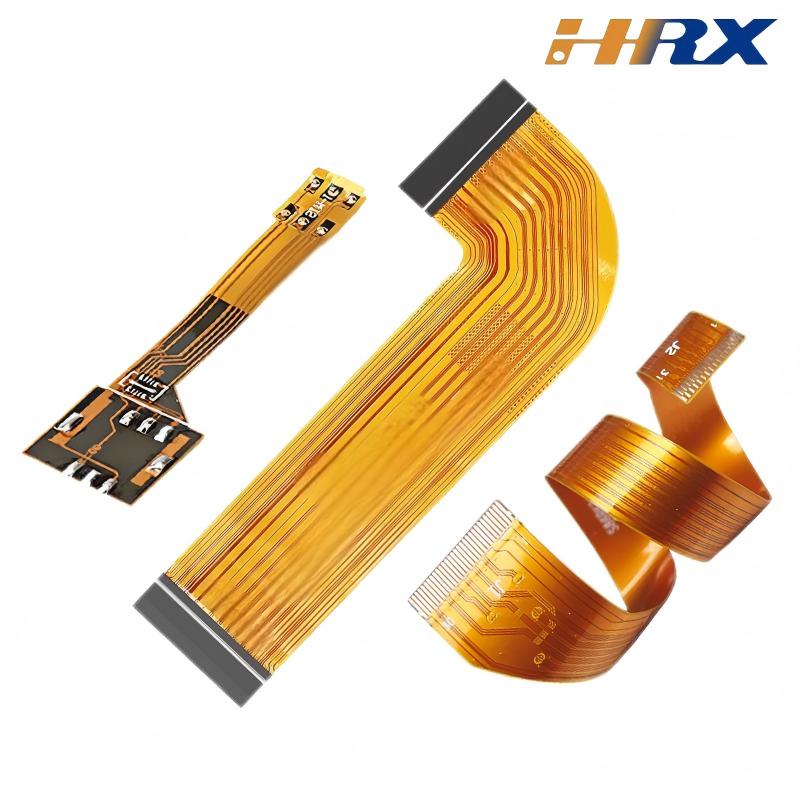Search
7 Critical Factors Impacting Rigid-Flex PCB Quality Beyond Design & Manufacturing
- May 28,2025
-
Share
In the competitive landscape of electronics manufacturing, ensuring the quality of Rigid-Flex Printed Circuit Boards (RFPCs) is paramount. While design, raw materials, and production processes are well-recognized pillars of quality control, several other often-overlooked factors significantly influence the performance and reliability of these complex assemblies. As a leading global provider specializing in Flexible Printed Circuit (FPC), Printed Circuit Board (PCB), and Rigid-Flex PCB fabrication, Shenzhen Huaruixin Electronics Co., Ltd. understands the intricacies of maintaining superior quality across the entire product lifecycle.

1. Comprehensive Testing & Inspection Regimes
Impact on Quality: Inadequate testing can leave latent defects undetected, leading to costly field failures. A robust testing strategy is essential for identifying issues such as open circuits, impedance mismatches, and mechanical weaknesses in rigid-flex PCBs.
Key Testing Protocols:
Electrical Testing: Employing Automated Test Equipment (ATE), including flying probe testers and bed-of-nails fixtures, ensures 100% continuity, insulation resistance, and impedance compliance. For high-speed applications, advanced tools like time-domain reflectometry (TDR) and vector network analyzers (VNAs) are crucial for maintaining signal integrity.
Mechanical Testing: Bend cycle testing simulates real-world flexing, validating durability—an important factor for applications like wearables. Peel strength testing measures the reliability of adhesive bonds between layers, such as coverlay-to-substrate in FPC sections.
Environmental Testing: Thermal shock/stability tests expose boards to extreme temperatures (-40°C to +125°C), assessing CTE (Coefficient of Thermal Expansion) compatibility. Humidity/altitude testing is vital for aerospace or automotive applications, preventing moisture ingress and delamination.
Our Approach: At Shenzhen Huaruixin Electronics, we utilize automated optical inspection (AOI) with AI-driven defect recognition, capable of detecting micro-defects as small as 50μm, ensuring the highest quality in rigid-flex PCB assembly.
2. Robust Supply Chain & Logistics Management
Impact on Quality: A poorly managed supply chain can introduce counterfeit materials, delivery delays, or handling damage, jeopardizing product quality and timelines.
Strategic Supply Chain Practices:
Vendor Qualification: We rigorously audit suppliers based on ISO 9001 and IPC-6012 standards, demanding material traceability and compliance with regulations like RoHS and REACH.
Inventory Control: Materials are stored in climate-controlled environments (humidity <50%, temperature 23±3°C) to prevent degradation of adhesives and dielectrics commonly used in FPCs.
Logistics Protection: Anti-static packaging, shock-absorbing inserts, and tracked shipping safeguard boards from ESD (Electrostatic Discharge) and mechanical damage during transit.
Benefit: Our dual-source supplier strategy for critical materials, such as polyimide films, ensures consistent material properties, reducing production risks and enhancing overall product reliability.
3. Operator Skill & Continuous Training
Impact on Quality: Manual processes in rigid-flex PCB manufacturing, from component placement to soldering, rely heavily on operator expertise.
Training Initiatives:
Certification Programs: Technicians undergo training aligned with IPC standards, including IPC-A-620 for cable assembly and IPC-6013 for rigid-flex PCB acceptance criteria.
Cross-Functional Knowledge: Operators are educated on the correlation between design intent and manufacturing constraints, such as the importance of bend radius in FPC sections.
Error Prevention: Poka-yoke (mistake-proofing) tools, like component alignment jigs and barcode lot verification systems, minimize human errors.
Success Story: Our quarterly retraining programs on advanced techniques, such as laser drilling for microvias, have significantly improved the precision of high-density FPC production, boosting yield rates.
4. Regulatory & Compliance Adherence
Impact on Quality: Non-compliance with industry standards can result in failed audits, product recalls, and legal issues.
Key Compliance Areas:
Industry Standards: Adhering to IPC-2223 for flexible circuit design, IPC-A-600 for PCB defect acceptance, and UL 94 V-0 for flammability requirements in safety-critical applications.
Regional Regulations: Meeting global standards like RoHS/REACH for Europe, CCC for China, or DFARS for defense contracts.
Documentation: Maintaining traceable records of material certifications, process logs, and test reports for seamless compliance audits.
Our Commitment: For medical device applications, our rigid-flex PCBs undergo biocompatibility testing (ISO 10993) and FDA-compliant traceability processes, ensuring regulatory excellence.
5. Post-Production Handling & Storage
Impact on Quality: Improper handling after manufacturing can introduce damage, including excessive flexing or contamination.
Best Practices:
ESD Protection: ESD-safe workstations, gloves, and packaging prevent electrostatic damage to sensitive components, a common concern in FPC and rigid-flex PCB manufacturing.
Storage Conditions: Completed boards are stored in sealed, moisture-proof bags with desiccants to avoid oxidation and delamination in humid environments.
Assembly Guidelines: We provide detailed customer instructions on handling, such as proper reflow temperatures and avoiding bending of rigid sections, ensuring product integrity post-delivery.
6. Design for Manufacturing (DFM) Reviews
Impact on Quality: Ignoring DFM principles can lead to production issues, rework, and cost overruns.
DFM Considerations:
Manufacturability Checks: Ensuring minimum line width/spacing (e.g., 50μm for high-density FPCs), optimal drill hole aspect ratio (≤10:1), and feasible bend radii (≥2× flex layer thickness).
Cross-Functional Collaboration: Early engagement of manufacturing engineers in the design phase helps identify and resolve issues like conflicting layer stack-ups or unachievable tolerances.
Case Study: In a project requiring 0.1mm microvias, our DFM team's recommendation to use laser drilling instead of mechanical drilling increased the yield from 65% to 92%, showcasing the value of proactive DFM practices.
7. Feedback Loop from Field Applications
Impact on Quality: Neglecting real-world performance data hinders continuous improvement.
Continuous Improvement Process:
Failure Analysis: Utilizing techniques like X-ray imaging, SEM (scanning electron microscopy), and thermal imaging for root cause analysis of field returns.
Customer Collaboration: Partnering with clients to gather feedback on product longevity, environmental performance, and assembly challenges.
Process Iteration: Updating design rules and manufacturing parameters based on field insights, such as reinforcing flex zones in robotics applications to reduce stress-related failures.
Conclusion: Elevating Rigid-Flex PCB Quality with a Holistic Approach
Ensuring the quality of rigid-flex PCBs demands a comprehensive strategy that addresses all aspects of the product lifecycle. At Shenzhen Huaruixin Electronics Co., Ltd., our commitment to integrating these critical factors into our ISO 9001:2015-certified quality management system sets us apart as a trusted partner for high-reliability FPC, PCB, and rigid-flex PCB solutions.
If you're seeking customized, top-quality rigid-flex PCB products tailored to your specific requirements, visit www.hrxfpc.com or contact us at sales@hrxfpc.com. Let's collaborate to engineer innovative solutions that excel in even the most demanding environments.

Let’s talk! We’ll provide the perfect solution for you!
-
 Huaruixin Electronics mainly produces printed circuit boards as the core business, to provide customers with one-stop solutions for FPC/PCB production, components sourcing and Assembly.
Huaruixin Electronics mainly produces printed circuit boards as the core business, to provide customers with one-stop solutions for FPC/PCB production, components sourcing and Assembly. - WHAT WE DO — PCB Design Solutions — Flex PCB Production — Components Sourcing — FPC&PCB Assembly
- PRODUCTS — Single Sided Flexible Circuits — Double Sided Flexible Circuits — Multilayer Flexible Cirucits — Rigid-Flex Circuits — FPC Assembly — PCB Assembly
- CAPABILITY — FPC Capability — Rigid-Flex Capability — PCB Capability — Assembly Capability
- Copyright © 2024 Shenzhen Huaruixin Electronics Co., Ltd. All Rights Reserved.
- Design By BONTOP


